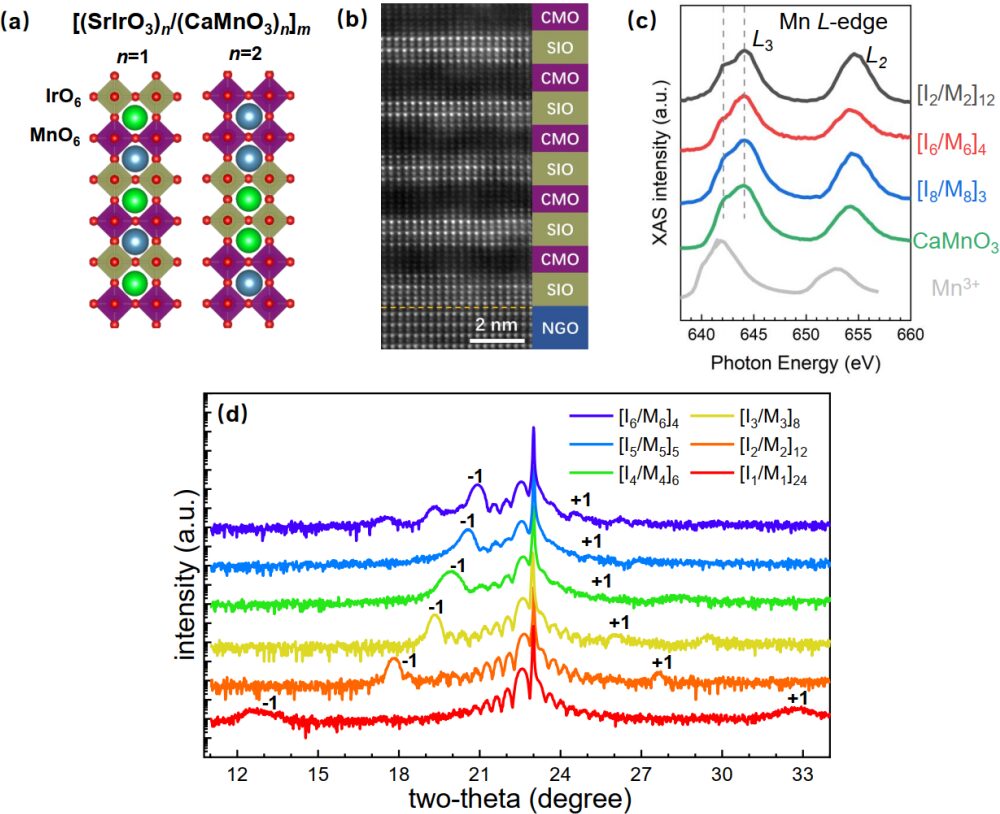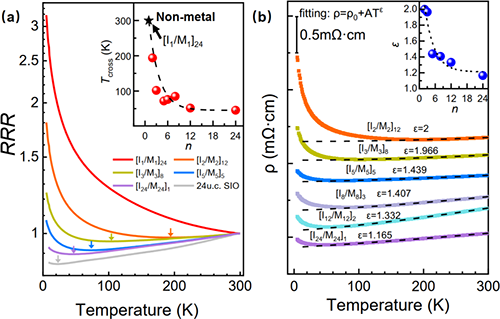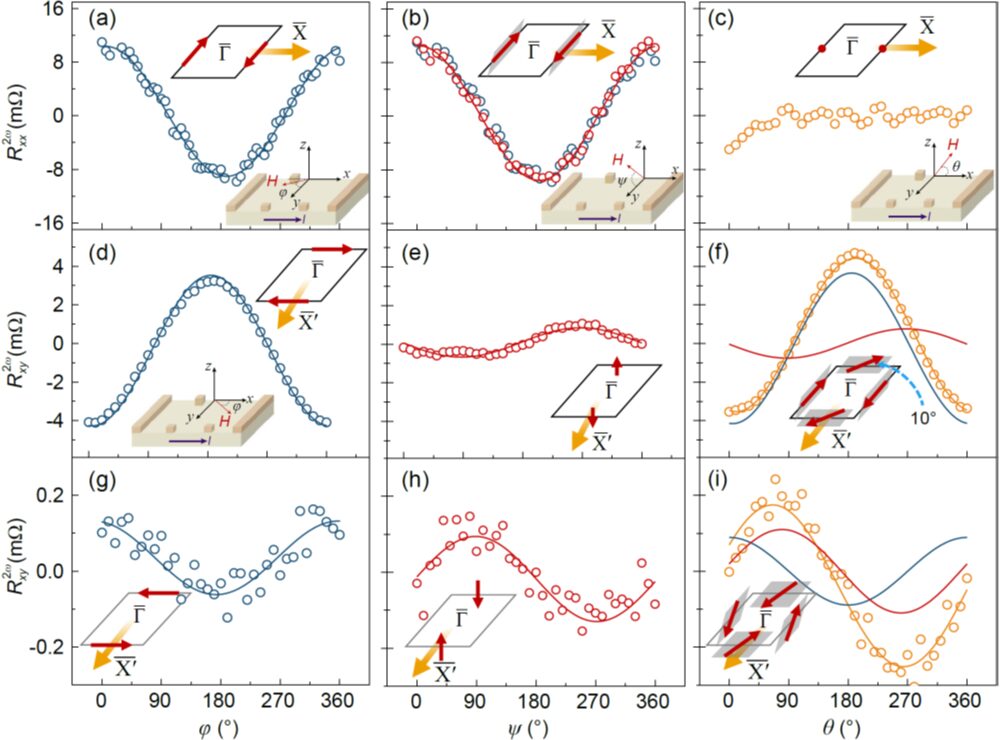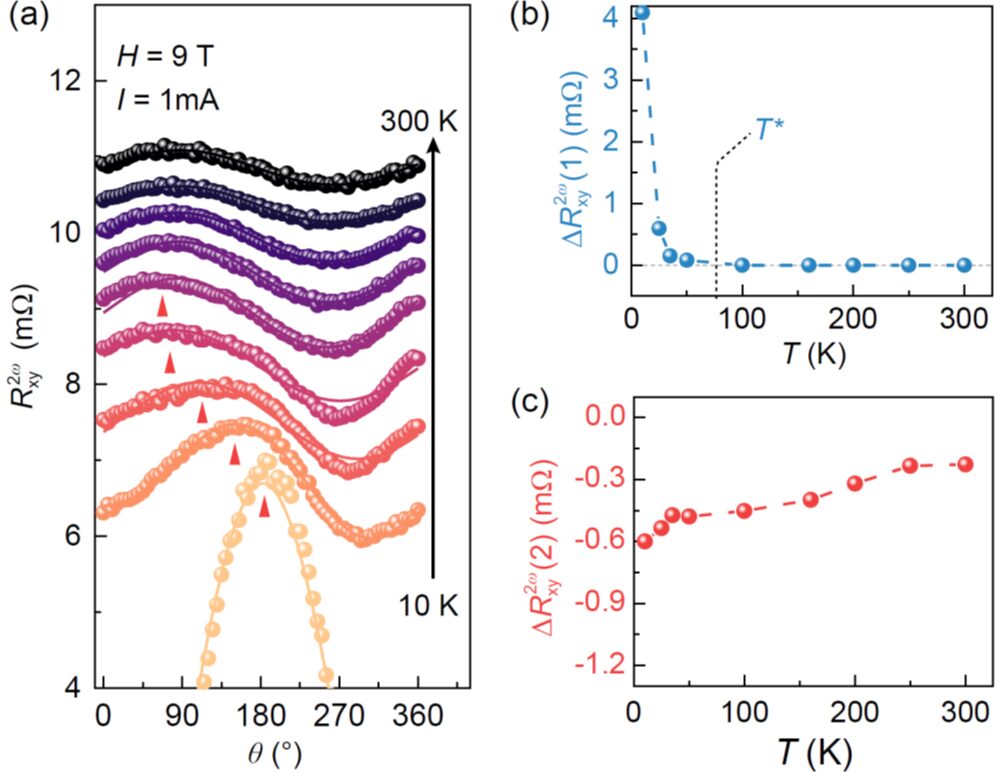As one of the typical representatives of 5d transition metal oxides, the perovskite-structured SrIrO3 (SIO) exhibits comparable spin-orbit coupling (SOC) and electron correlation energy (U). The competition between these two factors leads to a variety of novel quantum effects in SIO, such as metal-insulator transitions, paramagnetic-antiferromagnetic transitions, and Mott insulator-Slater insulator intermediate states. At the 3d – 5d oxide heterointerfaces, the strong electron-electron correlation (EEC) introduced by the 3d system can modulate the interactions of electrons near the interface, thereby inducing novel physical properties. However, the physical mechanisms of interactions at the 3d – 5d interfaces are still not well understood, and there are certain controversies and disagreements in some aspects. Additionally, SIO exhibits a strong spin Hall effect and a large spin Hall angle, which makes it very promising for applications in oxide spintronics. By fabricating multilayers with magnetic materials, one can generate symmetry-induced anisotropic spin-orbit torque, current, and crystallographic orientation-induced magnetic switching. However, current methods for controlling spin-charge conversion based on SIO rely on magnetic materials, requiring the use of polarized photons or magnetic fields to manipulate the spin states of electrons. How to generate, detect, and control spin currents in non-magnetic SIO is crucial for designing spin-related devices. Enriching and improving the fundamental research of SIO materials in spintronics to enhance spin-charge conversion efficiency and developing new methods for detecting spin currents are of great significance for promoting the application of oxide spin devices.

Figure 1. Structural characterization of the [(SrIrO3)n/(CaMnO3)n]m superlattice.

Figure 2. The metal-nonmetal transition that occurs as the period number changes in the [(SrIrO3)n/(CaMnO3)n]m superlattice.
Associate Researcher Meng Meng and Postdoctoral Fellow Gu Minghui from the HM-SF06 group of the Institute of Physics, Chinese Academy of Sciences/National Research Center for Condensed Matter Physics in Beijing, under the leadership of Group Leader Researcher Guo Jiandong, have been engaged in the controllable epitaxial preparation and exploration of novel properties of low-dimensional transition metal oxide systems for a long time. They successfully introduced the 5d strong SOC oxide SIO into the 3d strong electron correlation oxide CaMnO3 (CMO) and prepared high-quality superlattice ([(In/Mn]m) samples, where the total thickness of SIO and CMO is fixed at 24 unit cell layers (m×n=24). With the increase of period number m, the system undergoes a metal-nonmetal transition, and the transition temperature increases with the increase of period number m. Detailed low-temperature magnetoresistance analysis indicates that the metal-nonmetal transition of the system originates from the anti-correlation between SOC and EEC. The quasi-two-dimensional characteristic of EEC can affect the SOC strength of the SIO layer at the interface and extend a certain depth into the SIO. The relevant research has been published in ACS Applied Electronic Materials under the title “Modulation of the Metal−Nonmetal Crossover in SrIrO3/CaMnO3 Superlattices.”
Original link
 Figure 3. Schematic diagram of nonlinear magnetoelectric effect.
Figure 3. Schematic diagram of nonlinear magnetoelectric effect.
Recently, the team successfully introduced a strain gradient in the centrosymmetric SIO through precise control of growth, breaking its spatial inversion symmetry and inducing nontrivial spin textures in momentum space. When the thickness of the SIO film grown on NdGaO3 substrate exceeds 24 unit cell layers, strain gradient behavior occurs. As the thickness increases, the strain is continuously released. The reason for this mechanism is related to the combined effects of lattice mismatch and thermal expansion coefficient mismatch. Furthermore, utilizing the second-order nonlinear magnetoelectric transport effect, the momentum space spin texture was successfully detected in the coherently grown SIO films with strain gradients. The second-order resistance with a period of 2π essentially elucidates the nonlinear spin-charge interconversion. In the absence of strain gradients, due to the symmetry breaking at the interface of the SIO film, second-order unidirectional conductivity can be generated; however, when a strain gradient is introduced, SIO exhibits the superposition of two sets of nonlinear magnetoelectric effects, one set arising from interface symmetry breaking and the other from bulk symmetry breaking introduced by strain gradient, with completely different Fermi surface warping properties. Our experimental results first propose that strain gradient can serve as an effective method for controlling momentum space spin texture and provide an idea for introducing spin splitting in centrosymmetric systems, which is expected to be promoted in other centrosymmetric strong SOC materials.
 Figure 4. Structural characterization of SrIrO3 films of different thicknesses.
Figure 4. Structural characterization of SrIrO3 films of different thicknesses.

Figure 5. Second-order angular resistance of SrIrO3 films under strain gradient.
The relevant research has been published in the National Science Review under the title “Momentum-space spin texture induced by strain gradient in nominally centrosymmetric SrIrO3 films.” Postdoctoral fellow Gu Minghui from the HM-SF06 group and doctoral student Sheng Haohai from the HM-T03 group are co-first authors of the paper, with corresponding authors being Researcher Wang Zhijun, Associate Researcher Meng Meng, and Researcher Guo Jiandong. The structural characterization, micro-fabrication, and macroscopic transport characterization experiments in this work were all completed on the SECUF (Synthesis of Extreme Conditions Under Fundamental Research) experimental setup, and the work also received significant assistance from Professor Gao Peng of Peking University in scanning transmission electron microscopy. This work was supported by various projects from the Ministry of Science and Technology, the National Natural Science Foundation of China, and the Youth Innovation Promotion Association of the Chinese Academy of Sciences.
Original link

Figure 6. SrIrO3 films under strain gradient exhibit the superposition of two sets of nonlinear magnetoelectric effects.

Figure 7. Spin texture in momentum space induced by strain gradient in SrIrO3.
Editor: K.Collider
↓ Click the title to view ↓
1.Why Do Dried Clothes Smell So Bad? The Reason Is…
2.Can the Safety Pin of a Hand Grenade Be Reinserted After Being Pulled? (Issue 400 Benefits) | No.400
4.Why Do Humans Have Five Fingers? Is Five Special?
